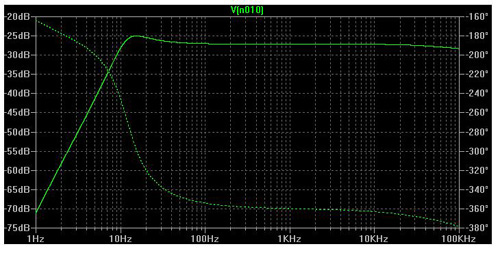WJA Electron Audio
WJA Electron Audio
Audio Pre-amp
Audio Pre-amp
Pre-Amp Design
Triode gain stages
High quality and accuracy for RIAA.
Minimal components directly in signal path Constant current source fed OD3 VR tubes for each 6C45PI (shunt regulation) Constant Current Source anode load 6C45PI Constant current DC supply to filaments.


Performance
In current guise it is extremely good (I mean I’m having trouble finding live events that sound this good – unamplified live is of course better) There is a small hump +2dB at 15 Hz due to the inductance value of the TVC but it ain’t causing any real issues. Soon to be addressed with a coupling cap mod. Gain is about 65 dB all in with TVC at +6dB and 1:10 MC transformer. No trouble for Jeff Rowland Model 1
Apart from the 15Hz bump I am +/- 0.5 dB from 50 Hz to 50Khz. -3dB at 10 Hz and about 120kHz. 4th time constant is observed in the design.
Anyway, all that is simply justification on paper. The proof was in the listening and it blew away the previous commercial pre-amp. I was at first shocked , but considering the 6 to 8 months I’d put into designing it I should not have been so surprised. I didn’t cut many corners and now perhaps the only things to do is upgrade coupling caps, and at the same time smooth the hump (it will start to roll off at about 22Hz and be -3dB at 14Hz with the revision, so should benefit by being further from the tonarm/cartridge resonance), and maybe I’ll try non solid state shunt regulator supply… VR tubes perhaps.
UPDATE Jan 2011… VR tubes done! and coupling caps adjusted to remove hump. Mundorf silver and oil for the new caps.. Why skimp at this stage?
Result: Very very good. I discovered the solid state shunt regulater was sometimes oscillating (I think when the voltage in, fluctuated with mains fluctuation) and this encouraged me to actually put the VR tubes in. Lots of really subtle details popped into the image. This is certainly helped by lack of oscillation but possibly also because of separate shunt regulation for each amplifying valve. I have no ripple visible on the scope and just the faintest white noise hiss with your ear on the speaker at high volume level (no music of course).

Frequency response corrected RIAA with 4th time constant

The RIAA curve

Pre-Amp Design
Triode gain stages
High quality and accuracy for RIAA.
Minimal components directly in signal path Constant current source fed OD3 VR tubes for each 6C45PI (shunt regulation) Constant Current Source anode load 6C45PI Constant current DC supply to filaments.


Frequency response corrected RIAA with 4th time constant

The RIAA curve
Performance
In current guise it is extremely good (I mean I’m having trouble finding live events that sound this good – unamplified live is of course better) There is a small hump +2dB at 15 Hz due to the inductance value of the TVC but it ain’t causing any real issues. Soon to be addressed with a coupling cap mod. Gain is about 65 dB all in with TVC at +6dB and 1:10 MC transformer. No trouble for Jeff Rowland Model 1
Apart from the 15Hz bump I am +/- 0.5 dB from 50 Hz to 50Khz. -3dB at 10 Hz and about 120kHz. 4th time constant is observed in the design.
Anyway, all that is simply justification on paper. The proof was in the listening and it blew away the previous commercial pre-amp. I was at first shocked , but considering the 6 to 8 months I’d put into designing it I should not have been so surprised. I didn’t cut many corners and now perhaps the only things to do is upgrade coupling caps, and at the same time smooth the hump (it will start to roll off at about 22Hz and be -3dB at 14Hz with the revision, so should benefit by being further from the tonarm/cartridge resonance), and maybe I’ll try non solid state shunt regulator supply… VR tubes perhaps.
UPDATE Jan 2011… VR tubes done! and coupling caps adjusted to remove hump. Mundorf silver and oil for the new caps.. Why skimp at this stage?
Result: Very very good. I discovered the solid state shunt regulater was sometimes oscillating (I think when the voltage in, fluctuated with mains fluctuation) and this encouraged me to actually put the VR tubes in. Lots of really subtle details popped into the image. This is certainly helped by lack of oscillation but possibly also because of separate shunt regulation for each amplifying valve. I have no ripple visible on the scope and just the faintest white noise hiss with your ear on the speaker at high volume level (no music of course).
Contact
WJA Electron S.A.R.L.
216 Route du Mas de Soulié
46230 Cremps, France
International VAT Number: FR08503863136
© 2024 Created with InfinITiServe
Contact
WJA Electron S.A.R.L.
216 Route du Mas de Soulié
46230 Cremps, France
International VAT Number: FR08503863136
© 2024 Created with InfinITiServe

